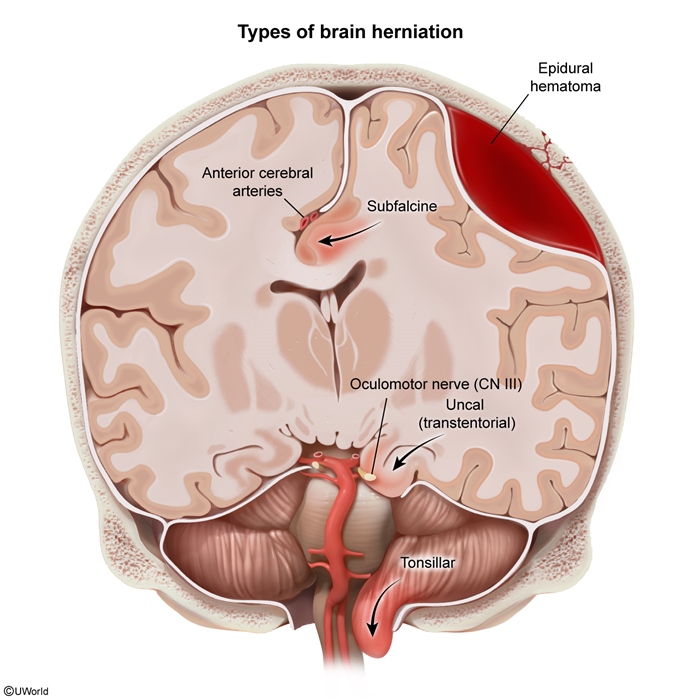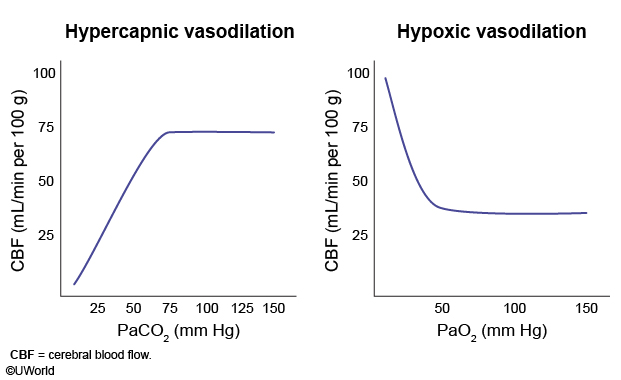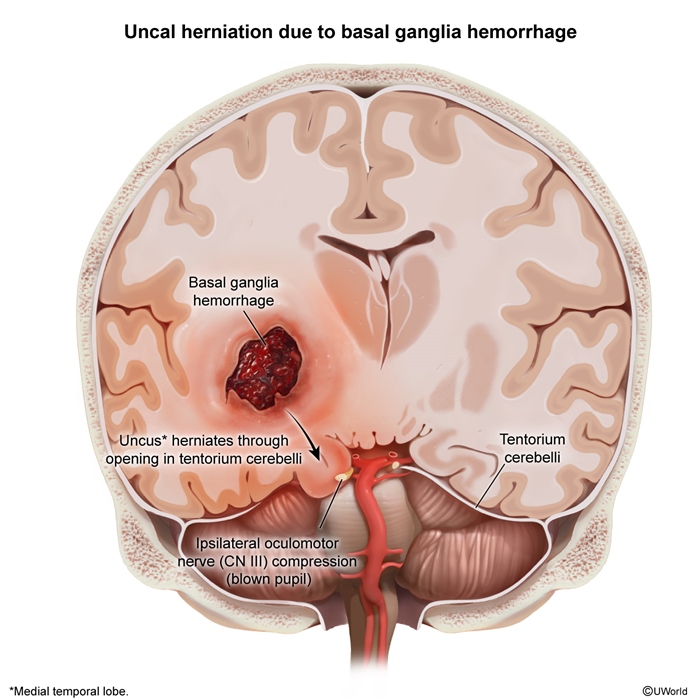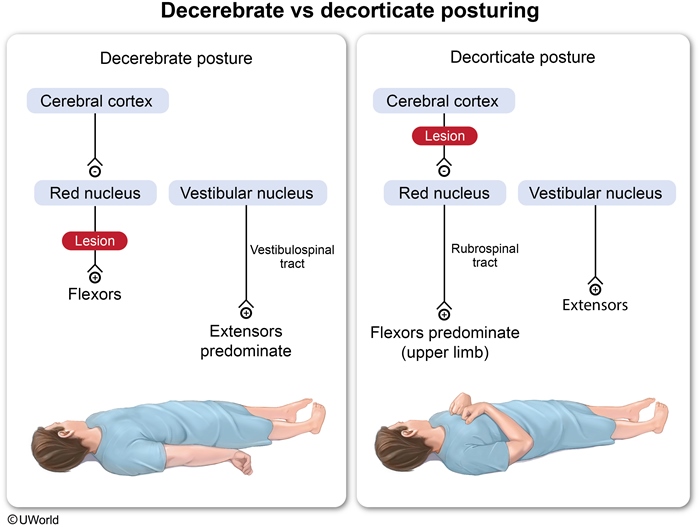Brain Herniation Syndromes
Article Sections
Introduction
Elevated intracranial pressure (ICP) is an increase in pressure in the cranial compartment, a rigid, limited space. Brain herniation occurs when increased ICP results in compression of the brain within the rigid cranium and protrusion of portions of the brain through openings in the dural folds. This can result in significant morbidity and mortality.
Pathophysiology
ICP is determined by the total volume of the 3 distinct brain compartments within the fixed volume of the cranium:
- Brain parenchyma (80% of volume)
- Cerebral blood (10% of volume)
- Cerebrospinal fluid (CSF) (10% of the volume)
In the absence of disease pathology, most of these components are held at a relatively constant volume thanks to cerebral autoregulation mechanisms (via cerebral blood vessel dilation and contraction), described in more detail later. An increase in volume in one of the components of the cranium leads to an increase in ICP and eventually forces a decrease in the other components. This may clinically result in either cerebral ischemia (due to decreased cerebral blood flow) or herniation (due to displacement of brain parenchyma).
Continue Learning with UWorld
Get the full Brain Herniation Syndromes article plus rich visuals, real-world cases, and in-depth insights from medical experts, all available through the UWorld Medical Library.
Figures



